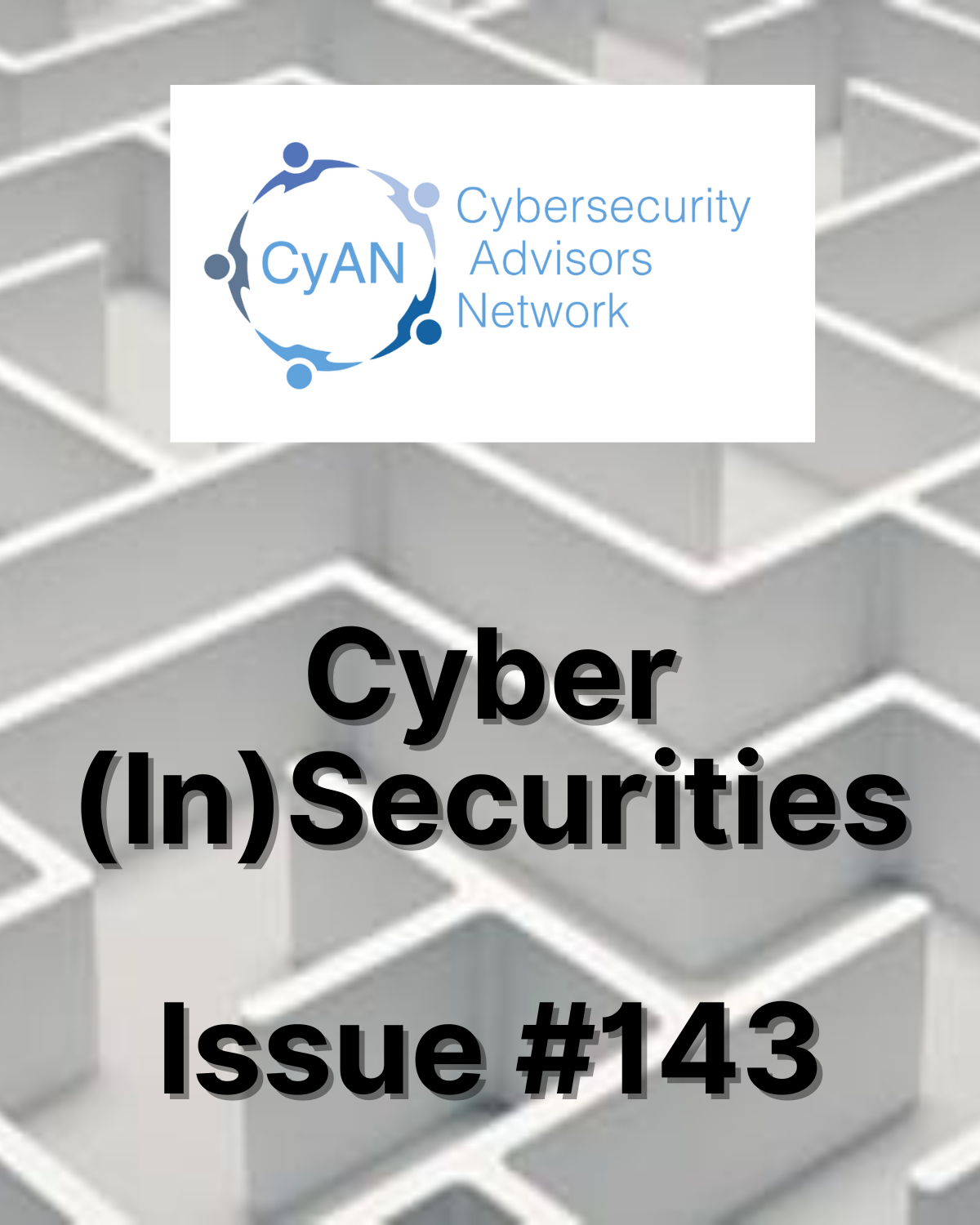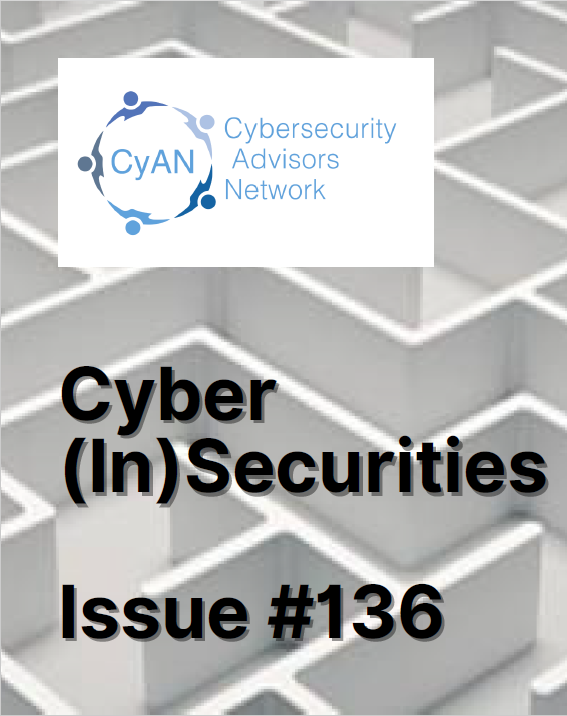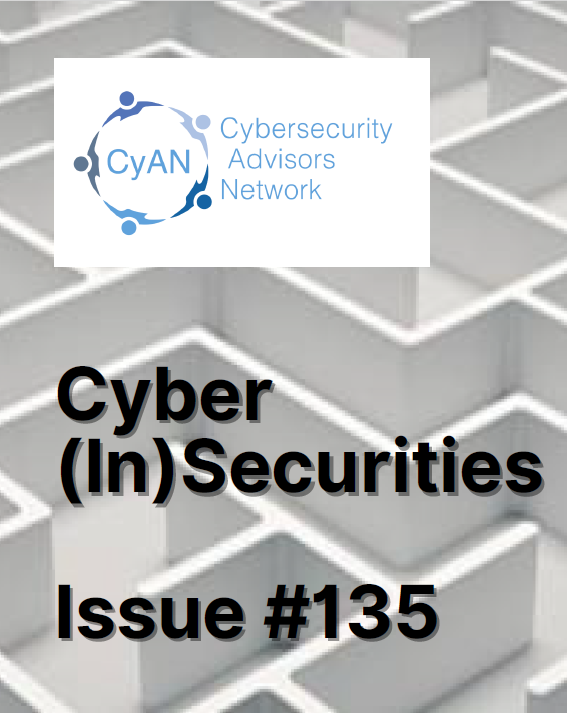Tag: cybernews
Cyber (In)Securities – Issue 143
News Cybersecurity CEO accused of running malware on hospital PC blabs about it on LinkedInThe Register – Brandon Vigliarolo Cybersecurity experts issue response to Trump order targeting Chris Krebs, SentinelOneCyberscoop – Greg Otto Marks & Spencer breach linked to Scattered Spider ransomware attackBleepingComputer – Lawrence …
Cyber (In)Securities – Issue 139
Information Security News Autonomous, GenAI-Driven Attacker Platform Enters the ChatDark Reading – Elizabeth Montalbano EncryptHub’s dual life: Cybercriminal vs Windows bug-bounty researcherBleepingComputer – Bill Toulas Voluntary ‘Pall Mall Process’ seeks to curb spyware abusesCyberscoop – Tim Starks That massive GitHub supply chain attack? It all …
Cyber (In)Securities – Issue 136
Information Security News Italian government approved use of spyware on members of refugee NGO, MPs told The Guardian by Angela Giuffrida & Stephanie KirchgaessnerItalian lawmakers have been informed that spyware was authorised against members of a refugee NGO, sparking fierce backlash over potential human rights …
Cyber (In)Securities – Issue 135
Information Security News US Weakens Disinformation Defenses, as Russia & China Ramp Up Dark Reading by Robert LemosAs geopolitical tensions escalate, the US has notably reduced its efforts to combat disinformation, especially from key adversaries like Russia and China. This rollback occurs despite increasing efforts …
Cyber (In)Securities – Issue 134
Information Security News Judge blocks Elon Musk’s Doge from accessing social security records The Guardian by Guardian Staff & AgenciesA federal judge has issued a restraining order preventing Elon Musk’s Department of Government Efficiency (Doge) from accessing Social Security Administration (SSA) records, citing privacy concerns …
Cyber (In)Securities – Issue 133
Information Security News Microsoft: New RAT Malware Used for Crypto Theft, Reconnaissance BleepingComputer by Sergiu GatlanMicrosoft has identified a new form of RAT (Remote Access Trojan) malware that is being used for cryptocurrency theft and detailed reconnaissance of infected systems. This sophisticated malware targets digital …
Cyber (In)Securities – Issue 132
Information Security News Elon Musk’s Starlink Could Be Used to Transmit Australian Election Voting Results The Guardian by Josh TaylorThe Guardian reports that Elon Musk’s satellite internet service, Starlink, is being considered as a potential method to transmit voting results in Australian elections. This proposal …
Cyber (In)Securities – Issue 131
Information Security News EU Looks to Tech Sovereignty with EuroStack Amid Trade War Biometric Update by Masha BorakThe European Union is making significant strides towards tech sovereignty with the development of EuroStack, a comprehensive technology initiative aimed at reducing dependence on foreign tech giants amid …





